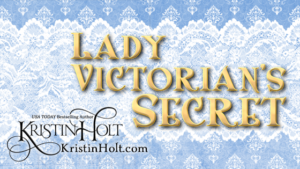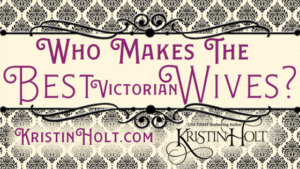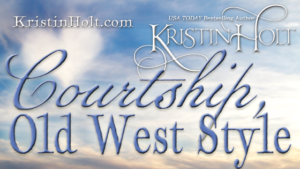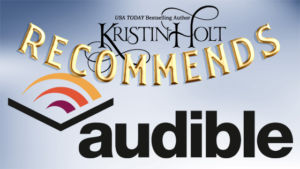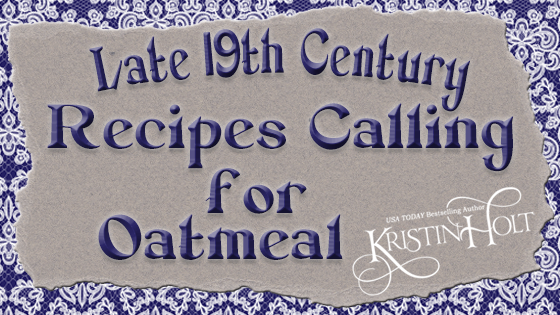
by Kristin Holt | May 27, 2019 | Articles
Oatmeal took its place in the Victorian-American kitchen in the late 19th century. We’ve discovered oatmeal cookies (with and without raisins), oatmeal porridge, oatmeal in toiletries; now more late 19th-century recipes that call for oats. Delicious dishes like oatmeal puddings, oatmeal custards, oatmeal cream pie, oatmeal muffins, oatmeal biscuits (sweet), “parkin”… and a rather scary option– Oatmeal Soup.
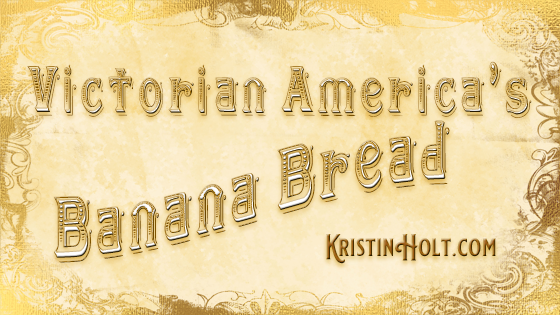
by Kristin Holt | Feb 23, 2019 | Articles
Today, February 23, is National Banana Bread Day. While banana bread (as we now know it) became a staple among home bakers in the 1930s, banana bread had its start in the late Victorian era where “banana flour” came to the United States from the tropics. Vintage newspaper advertisements show the beginnings of banana bread available in bakeries and homemakers’ awareness of quality nutrition to be found in the imported fruit and “flour.” With or without nuts, banana bread is a hallmark of American quick breads… and our nineteenth century ancestors, complete with baking powder and a wealth of cake-baking knowledge, were prepared for the post-Great Depression’s urge to “use it up.”
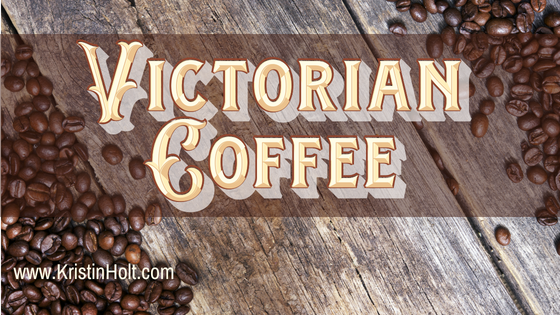
by Kristin Holt | Jan 3, 2019 | Articles
We know coffee was an every-day commodity in the Victorian American West, but how much do you know about its availability, preparation methods, the era’s tried-and-true substitutions, and where it was purchased? Come see!
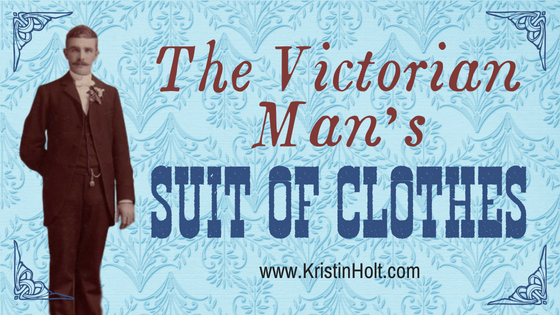
by Kristin Holt | Jul 3, 2018 | Articles
A man’s proper suit of clothes was worn by gentlemen, bankers, clerks, professionals… virtually every man except those who labored manually (such as miners). Given men owned so few items of clothing, they certainly wore what they had, despite the demand. Levi Strauss developed the original “Levi’s 201’s” and “Levi’s 501’s”, built to last in the clothing-destroying mines. Compare and contrast the “suit of clothes” with Levi’s originals.

by Kristin Holt | Jun 22, 2018 | Articles
What is a Dental Dispensary (as seen in Isabella’s Calico Groom)? Compared to true-to-history dispensaries for medical care and eye troubles, this component of medical care to meet the needs of the poor was a real thing in the 19th century United States.







